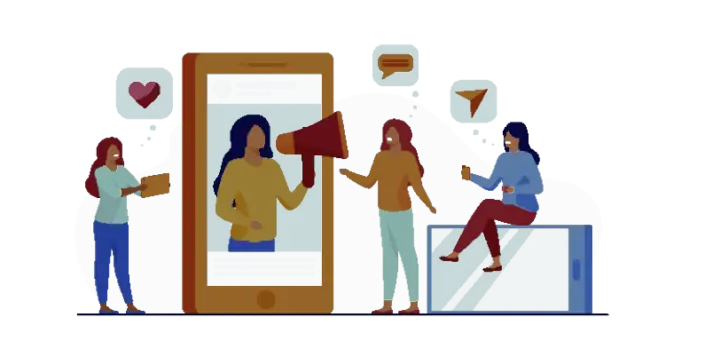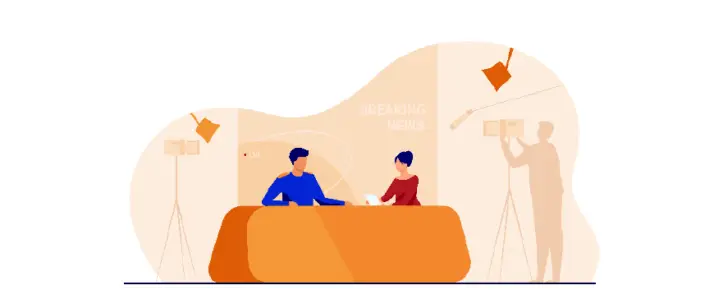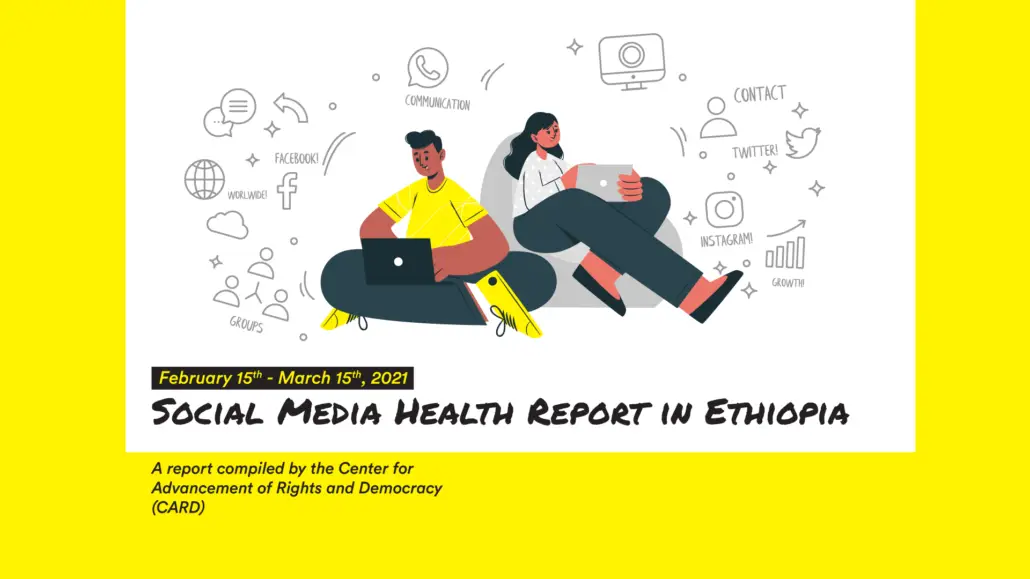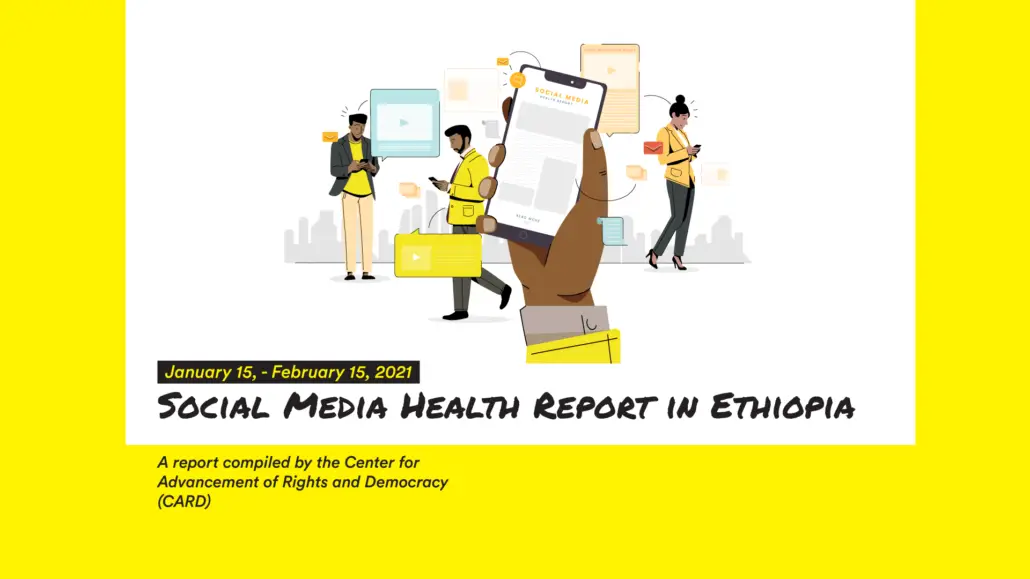Introduction
This social media health report construes the monitoring conducted from 1st to 31st of October 2020. The Health Report is aimed at assessing mainly the key issues/grievances on social media, the overall dynamics of hate speech in the country, and what they mean for the socio- political development of Ethiopia.
The monitoring for this month includes the overall assessment of social media activities through the platform of Crowd tangle. Key issues are determined based on the degree of interaction and the attention it received on social media.


Findings
Key Issues of the Month
In the month of October, the following issues have been widely discussed:
- The strict or intense checkpoints at entry points into Addis Ababa before the celebration of Irrecha festival. Some people associated the restriction with potential protests planned ahead of the festival. (October 1st-October 3rd).
- The news from the National Intelligence and Security Service about detaining a Terrorist group that was planning on carrying out a terrorism act. (October 1st).
- The requirement of badges for the celebration of Irreecha festival and the basis for handing out those badges have outraged some people. The officials have allowed only five hundred people to attend the event (October 1st – October 3rd).
- The federal Government suspending the subsidiary budget allocated to Tigray Regional State have been controversial news. (October 7th)
- Tigray Regional Government counters against the Federal Government by proposing the refusal of Revenue f rom that Regional State. (October 9th)
- A campaign claiming that the current Ethiopian Prime Minister and his Government do not have a constitutional mandate to govern the country. (October 5th–7th)
- The killings of more than 30 civilians in Gura Ferda Woreda of Bench Sheko zone in SNNPR. (October 21st – 27th)
- The killings in the East Wollega Zone of the Oromia Region, Nekemte. (October 23- October 25).
- A 24-hour Twitter campaign on the killings of more than 300 Ethiopians by security forces in the past three months. (October 22th-October 24th)
- The movement restriction imposed on orthodox Christians who were on their way to Zkuala Monastery for a spiritual celebration. (October 14th-October 16th)
- The news about the mandatory requirement of two local languages to be employed in government offices in Addis Ababa. This was later disclaimed as false information. (October 23rd)
- The warning by Amhara Regional Authorities that prohibits the Rally the opposition party National Movement of Amhara (NAMA) called to denounce the attacks on the Amhara Ethnic group. (October 25th-October 29th)


Social media Interaction
The issues/grievances levelled as key were circulated on social media with a wide number of interactions and were shared and discussed by several users.
■ The strict or intense checkpoints at entry points into Addis Ababa
The entry points in Addis Ababa were said to be restricted for ‘safety’ issues. This news was first checked on a Facebook page named ‘Ethiopia Check’ and has been shared and discussed as it makes people feel stranded and their freedom of movement restricted. Though some were supporting the measures taken, criticisms were widely coming from everywhere especially from Oromo nationalists ready to celebrate Irreecha festival and Orthodox Christians coming from Monasteries to Addis Ababa. There were also allegations of searching some youths based on unknown criteria, some were being forced out of the buses and their IDs checked. Amhara nationalists, on their part, opposed the move, saying it was a purposive attempt to push out the Amhara from the capital of Ethiopia. However, hate content has not been noticed by social media users while expressing their views. Everyone on their part has been criticizing the government as well as calling for an immediate intervention so that travellers (including Infants, pregnant women, the elderly, and sick persons) don’t have to suffer.
■ The requirement of badges for people celebrating Irreecha in Addis Ababa
This requirement was publicized through state media and was said to be done because of the nature of COVID 19 and social distancing. People took it to social media to voice their anger about the decision from the government as many thought it was a political move by the government to prevent political protests. There were also complaints raised that badges were being given to ‘Government cadres’, while those deserving to take part were purposely neglected from the celebration.
■ The detaining of a Terrorist group that was planning on carrying out a terrorism act.
After this news was reported by the state media, it was widely discussed because it was highlighted as a terrorism act that is a high-security risk for Ireecha celebration. Various stands were expressed, while some were in fear of what the celebration would bring, others said it was a security cover-up drama to violate the rights of those who celebrate it. Other than expressing what people felt, inappropriate online content was not part of the discussion.
■ A campaign on the current Ethiopian Prime Minister and his Government constitutional mandate to govern the country
This campaign was prepared to claim the end of the constitutional mandate of the current government to govern the country with the hashtags #AbiyisExpired #Abiymustgo and #Oromoprotest. It was initiated by Oromo activists including Eyasped Tesfaye. It was widely discussed starting on the 5th and 7th of October particularly because the term of the current government is set to constitutionally terminate on the 5th where the House of Federation and House of Representatives will open to resuming the 6th session. It was a call for the formation of a transitional government. Though widely campaigned on the 5th and 6th of October. It continued until October 12 with decreasing engagements.
As it is a campaign, participants were echoing the purpose of the campaign and trying to achieve the desired result. Though there were different positions reflected from some non-participants, the differences were not unhealthy.
■ The rivalry between the Federal Government and Tigray Regional Government
This concerns the suspension of the subsidiary budget allocated to Tigray Regional State and Tigray Regional Government counters against the Federal Government by proposing the refusal of Revenue from that Regional State.
The decision of the House of Federation (HOF) to stop relationships with the federal government, was the agenda which caught many by surprise. However, the relationship with the local institutions at Kebele, Woreda, and the city level will still be continued.
Many people were shocked and expressed their concern about where the relationship between the Federal and the Tigray Regional Government was heading to. And others were showing their belief that this was the only way to destroy TPLF, reacting “Now we’ll see what they will eat’’.

■ The 24-hour Twitter campaign
The campaign, in which Oromo activists, including Eyasped Tesfaye, Samuel Bekele, and Jawar Mohammed’s wife took part, is said to be aimed at raising awareness among Ethiopians and the International community about the killings of government security forces in Oromia, Somali and Wolayita zones in the past three months. This was widely discussed on the 21st and 22nd of October with the hashtags #3ooLives3Months and #ProblemIsTyrannyNotEthnicity and overlapping hashtags #oromoprotests #wolayita and #somali.
It received millions of interactions and views within 24 hours and also received media coverage. There were some differing positions reflected from some non-participants, particularly on the calling of such a campaign without properly recognizing the attacks on other ethnic groups in the wake of the assassination of Hachalu Hundesa. There were conversations on these different stands, where people express what they feel was right.
■ The movement restriction of Zekwala monastery travellers
The sudden movement restriction imposed on Orthodox Christians who were on their way to Zekwala monasteries angered and saddened many because it was considered as a religiously motivated attack by the ‘anti-orthodox’ government. Passengers were forced to walk for hours after the buses were stopped without being told why. The East Shoa Zone Communication Department said this was taking into account COVID19, while the Oromia police commissioner said it was decided according to a letter from the monastery. The head of the monastery, however, said they have written no letter and we are saddened by the inappropriate measure taken.
This news was first shared on social media by people who came to hear about the restriction from their closed ones. It has been an issue of discussion and Ethio check has also reported about it after checking the fact. It was considered as religious hatred and attack under the guise of COVID19 prevention, which violated freedom of religion.
■ The requirement of two local languages to be employed in government offices in Addis Ababa.
This was first reported on Sheger 102.1 Facebook page with the headline
‘’It said that it is mandatory to know 2 local languages to be employed in government offices in Addis Ababa’’. This report caused confusion and anger among Addis Ababa residents and Amharic speakers. It was considered as a plot to keep these parties out of the game. On the other hand, some parts of the society who feel isolated because of their language were seen supporting the idea.
Two days later Addis Ababa city administration made a disclaimer statement that ‘’ The rumor that dual language is mandatory for employment is untrue’’.
■ The Gura Ferda violence
Civilians in Gura Ferda Woreda of Bench Sheko zone in SNNPR were killed. Even if different numbers of deaths are mentioned by different media, it can be understood from various reports that over 30 civilians lost their life. Also, an unknown number of people were injured and more than 1500 displaced. The attack was said to be carried out by “Unidentified gunmen’’.
It was one of the hot topics circulated for longer days. The attack was given different meanings from different sides particularly the attack on Amhara on one side and the killings of Muslim Amhara’s on the other. Also, there were some trials to link the attack of Amhara Muslims with the recent statement of Abune Mathewos Orthodoxes to organize and defend.
■ The killings in Nekemte
The killings in the East Wollega Zone of the Oromia Region, Nekemte, which led to the death of 5 young citizens, shot by government security forces. This killing was widely discussed by Oromo people. Oromo activists were saying it is civilians who have been the target of attack. ‘’The dictatorial regime is brutally killing oromos’’ was the idea mainly reflected following the killings. On the other hand, Commander of the Oromia Special Police in Nekemte said the dead were bandits and members of Abba Torbe.
■ The prohibition of the Rally called by NAMA
There was a warning by Amhara Regional Authorities prohibiting the Rally that the opposition party National Movement of Amhara(NAMA) called to denounce the attacks on the Amhara Ethnic group. Later on that date, NAMA posted on its Facebook page that their office in Addis Ababa has been surrounded by Police while their senior officials were in a meeting.
Agreeing on its importance, many were waiting for the rally and the ban made them outrageous. Following this, a significant number of Ethiopians including celebrities condemned the killings and called the government to take action. On social media, a division was observed concerning the ‘Sene 15’ incident (between those who are from the birthplace of Dr. Ambachew and the alleged killer Asaminew Tsige). The disappointed groups (Dr. Amabachew’s side) were demonstrating as no one from their side will go out for it.

The Mainstream media’s response
These agendas which were circulating on social media, didn’t get as much coverage from the media. Even though media coverage was provided, it is difficult to say they are focused and contributing as expected.
For every grievance a certain group encounters, it is mostly the media that considers itself as the voice of that certain group doing the report. And this is usually very similar to the views that certain groups reflect on social media. Moreover, the reports themselves are not well-founded and free from bias. It’s crucial to mention the differences observed in the manner of reporting of the State and private media.
State media are becoming a platform that consistently disclaims what the private and social media users claim a certain agenda to be. The issues on the movement restriction into Addis Ababa for the annual Irreecha festival, detaining of a terrorist group that was planning on carrying out a terrorism act, the requirement of badges for the celebration of Irreecha festival and the ban imposed on the Zekwala monastery travellers are examples.

All these issues were reported by private media differently than the state media. The Ireecha festival-related concerns got the coverage of mainly Oromia media, the Zekwala travellers issue was given attention by EOTC and Abbay media echoing the concern of the people as they perceive it to be motivated by religious prejudice, whereas, the relation between the Federal government and Tigrean Regional state was the big concern of Tigray TV and DW. While these medias criticize the government, the state media on its part, was disclaiming what those media have reported.
Most one-sided media were only reflecting the grievances in such a manner. The Gura Ferda and Nekemete incidents best explain this. The Gura Ferda’s incident was the main concern of Amhara Medias, whereas Oromo Medias took the biggest hand in reporting the Nekemte’s incident. It should be noted that both sides are reflecting their political stand and the views of the group they are saying to represent.
Overall, mainstream media are in various aspects failing to fulfil their responsibilities.

Analysis
Social Media is being highly overwhelmed by new agendas now and then. Almost the whole mainstream and social media discourses nowadays are predominantly overwhelmed by reports and analyses of violence, genocide, extra-judicial killings, riots and strikes especially following the politics of exclusion and deprivation.
There are various responses and findings to the fact that the climate for tensions are likely to become more conducive in countries such as Ethiopia where the political stakes are high, similar to the approaching election.
The October social media trend indicates a different interaction. In situations where the political stakes are high, the instability adds a huge sum to the nationwide crisis. Governance related malpractices are being challenged, as people begin to understand what they have to ask as a right. Hence, these days, social media users are using the platforms to show how the government is failing them consistently. Though the trend of hate speech has diverted into criticizing the government, the online space still is tensioned. Biased and conflict insensitive reporting of mainstream media, lack of government transparency, lack of information, voice suppression and injustice are adding fuel to the online spaces.
In this regard, the media is failing to fulfill its responsibilities. It can be said it is becoming a concern no less important than social media. Unless they are able to carry out a non-biased and fact-based reporting system they will impact negatively creating suspicion and hatred among the public. If the media turns a deaf ear, to fill up the gap the disgruntled community will continue to use social media in whatsoever way to make their grief and abuse known. As people need their voices heard, their choice is to go to social media and use every opportunity to show how their right as citizens is degraded. It is extremely concerning that such online behaviors might highly trigger offline activities. Such tensions impact negatively and aggravate the damming socio-political situations of the country. This reinforces the fact that political instability, especially when it is of a violent nature, makes the victim aggressive and unpredictably dangerous as demands remain unanswered. As the problem is multifaceted which includes ethnic, religious and electoral related demands, their solution also requires more than simple answers. Unless the government properly responds to the demands of the people, the anger and opposition on social media are likely to escalate offline violence and strike. These tendencies exacerbate civil wars, religious and ethnic rivalries, and the emergence of electoral violence. Hence, these political problems require immediate political solutions.

Conclusion
This report has tried to articulate the health of the social media platform using CARD’s social media mapping tool, discourse and content analysis. The trend nowadays is becoming different from what it was before. Much of the social media tension is stemming from the political crisis in Ethiopia. The problems can only be solved when the political crisis is resolved. The mainstream media also took the lion share in aggravating the problem. The gap is contributing to the perpetuation of a tensioned social media environment.
The report claims the month of October shows a different trend where the users are rather using it for political criticism and protest. As the problem is complex and multifaceted, the government should seriously work on the way forward and give a political situation. The same recommendation goes for media platforms.
 Loading…
Loading…




